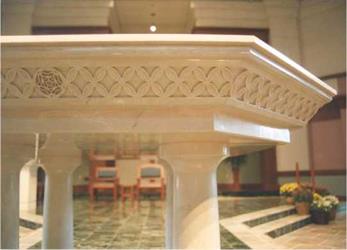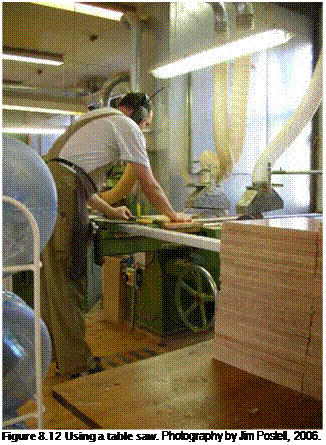 There are rules of thumb worth considering when working with hand and power tools in a shop environment. The first and foremost priority is to learn how to use power saws properly and safely. Learn how to hold, cut, and shape wood, metal, or plastic in a safe and proper manner. Listen to the sound of the machine’s motor. It will let you know when it is out of adjustment or being pushed beyond its limit.
There are rules of thumb worth considering when working with hand and power tools in a shop environment. The first and foremost priority is to learn how to use power saws properly and safely. Learn how to hold, cut, and shape wood, metal, or plastic in a safe and proper manner. Listen to the sound of the machine’s motor. It will let you know when it is out of adjustment or being pushed beyond its limit.
The motor driving a table saw can range from a small 2-horsepower motor to a large 10-horsepower motor, which directly affects the saw’s cutting power.
Observe the condition and sharpness of the saw blades and sanding belts frequently. Verify the jointer, planer, and table saws for accurate alignment.
Regularly check the condition of the blades and the Figure 8.11 Milled relief design cut into a marble mensa, made using a digital,
sanding belts. Confirm that the measurements on three-axis CNC. Photography by Jim Postell, 2002.
 guide rails and the fences are accurate and square to the cutting blade (Figure 8.12). Working in a shop is a dynamic experience in which attention is required at all times, especially when you work alone.
guide rails and the fences are accurate and square to the cutting blade (Figure 8.12). Working in a shop is a dynamic experience in which attention is required at all times, especially when you work alone.
Apply steady, consistent pressure when cutting wood.
Let the blade do most of the work; do not force the wood through the blade. Working with metals also requires firm, constantly applied pressure while cutting, drilling, sawing, or sanding. Consider the high temperatures generated in the metal and the blade when cutting or sanding, and remember to wear gloves and a sturdy face shield. Cutting wood requires the use of proper blades that depend on the type of cut desired. A rip cut (cutting along the length of a board) can be made using a 10-inch (25.4 cm) 24- (61 cm) to 48- (122 cm) tooth carbide-tip blade. These blades have ample space between their cutting teeth, which prevent the blade and wood from overheating.
Cross-cutting wood perpendicular to the grain requires a finer-toothed cross-cut blade to minimize grain tear-out (Figure 8.13). A cross-cut blade will not last long if it is used to rip lumber, and a rip-cut blade will produce poor results if used to cross-cut lumber. Combination blades are general, multipurpose blades used for ripping and cross-cutting wood. Dado blades are used for cutting channels of various widths and depths into lumber.
Many different hand and power tools are used to cut and shape wood. These include table saws, miter saws, panel saws, reciprocal saws (jigsaws), and scroll saws. The table saw is the most useful machine tool. It utilizes a variety of blades, a flat table, an adjustable fence, and a protective guard. Table saws are used to rip lumber and cut dados and quirk joints. When one is using adjustable fence slides set in grooves, they can be used for cross-cutting. The safety of table saws has recently been improved with electronic sensors that can prevent serious injuries. Miter saws are adjustable in both angle and depth for precision cutting of angles and square ends. Reciprocal saws, also known as jigsaws, are used to cut freehand straight or curved profiles and can be used with a template or guide for precision cuts.



